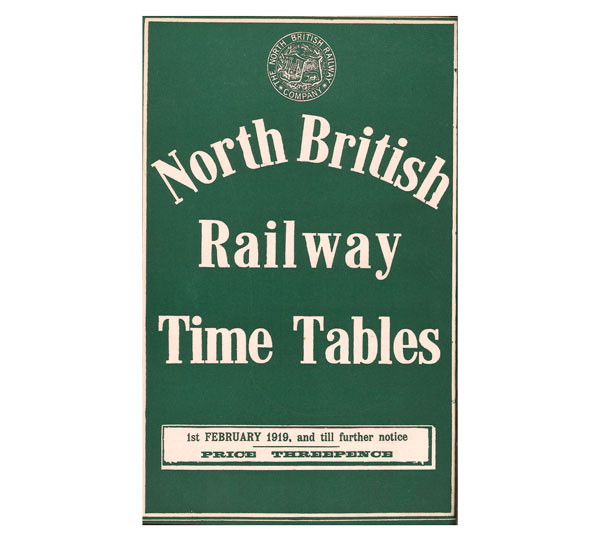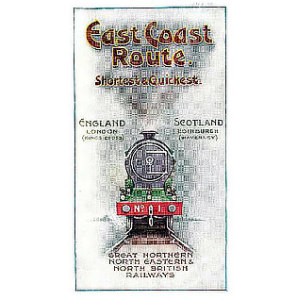Description
Any railway timetable is a “Snapshot in time” and can sometimes reveal information about contemporary events. This document is an interesting example, showing as it does, the first steps towards restoring pre-Great War levels of service. It is only 11 weeks since the Armistice was signed. Completion of the Versailles Peace Treaty is still some months off.
On the outbreak of the Great War, Government took control of the railways of Britain, under the provisions of pre-existing legislation. Wisely, this control was not exercised by politicians or civil servants, but by the Railway Executive Committee, consisting of the General Managers of all the leading Railways, under the chairmanship of (Sir) Herbert Walker, General Manager of the London & South Western Railway, which had taken the brunt of the work involved in the embarkation of the British Expeditionary force in 1914. Compensation was intended to be paid when peace came, on the basis of the last complete year’s traffic receipts, 1913. Once the BEF was safely across the channel, there was some relaxation of restrictions on civilian travel. None expected it to be “OVER BY CHRISTMAS!” but it was in the interests of Government that the railways should maximize their income, thus reducing the difference to be paid when peace came. Apart from asking the railways loco and carriage works to take on the manufacture of munitions, the slogan was “Business as Usual” for 1915, and the companies were told to run as much of the normal holiday traffic as possible. The North British, for example produced its customary inch-thick “Holiday Guide, but there were constraints. Munitions work caused the building of new locomotives to virtually cease, and maintenance and repairs fell into arrears. Also there was a requirement to run a never ending stream of trains (Jellicoe Specials) carrying good quality steam coal from Wales to supply the Grand Fleet at Scapa Flow, Cromarty Firth and Rosyth. A battleship could burn two or three trainloads in 24 hours, then there were hundreds of cruisers, destroyers, minesweepers and supply vessels, all with voracious appetites. This traffic would normally go by sea, but enemy activity with submarines and mines made this impossible. In addition, hundreds of locomotives were requisitioned for service overseas and thousands of railway men were leaving to join up, so long before 1915 was over cuts to services began, becoming increasingly severe by 1918. Military specials and train loads of raw materials and munitions took priority.
There was a general deceleration of train speeds to save fuel, heavy 12 wheeled Dining Cars which seated only a couple of dozen people in considerable comfort, were withdrawn for the same reason, and shortage of staff. The only on board catering was provided by “Breakfast and Tea Baskets” only available at a few selected stations. As the War dragged on little-used stations and branch lines were “Temporarily Closed”, and in some places double track was reduced to single, so that the rails could be sent to France. The west coast fishing ports, largely served by single line railways, were out of bounds to the casual traveler as train after train loaded with sea mines headed west, intended for the Northern Barrage, an attempt to block off access to the North Sea with a vast minefield between Scotland and Norway. By the summer of 1918, there was no longer any point in publishing monthly time tables. Services had been cut to the bone and any changes could be advised on a few sheets of paper.
An indication of how far things had deteriorated is given by the 10-00am departure from King’s Cross – the “Flying Scotsman” now taking 9 hours 50 minutes to reach Edinburgh. It is one of only three East Coast trains running between London and Edinburgh each day, with two sleepers each night. A similar pattern operates in the other direction, and there are also three trains per day each way on the Midland route. However, the first signs of improvement are apparent in February 1919. Some stations are listed for re-opening, and two East Coast trains in each direction, are shown to have restaurant cars for part of their journeys.
The railways remained under Government control until 1921, gradually improving services. It would be years before anything like the levels available in 1914 were restored. As might be expected, Government tried to weasel out of some of the money which it owed the railways, and the North British particularly disputed the sum it was offered. It took the Government to court and eventually won its case, by which time it was due to be “Grouped” into the LNER.
PREVIEW BELOW – MAY TAKE A WHILE TO LOAD.


Reviews
There are no reviews yet.